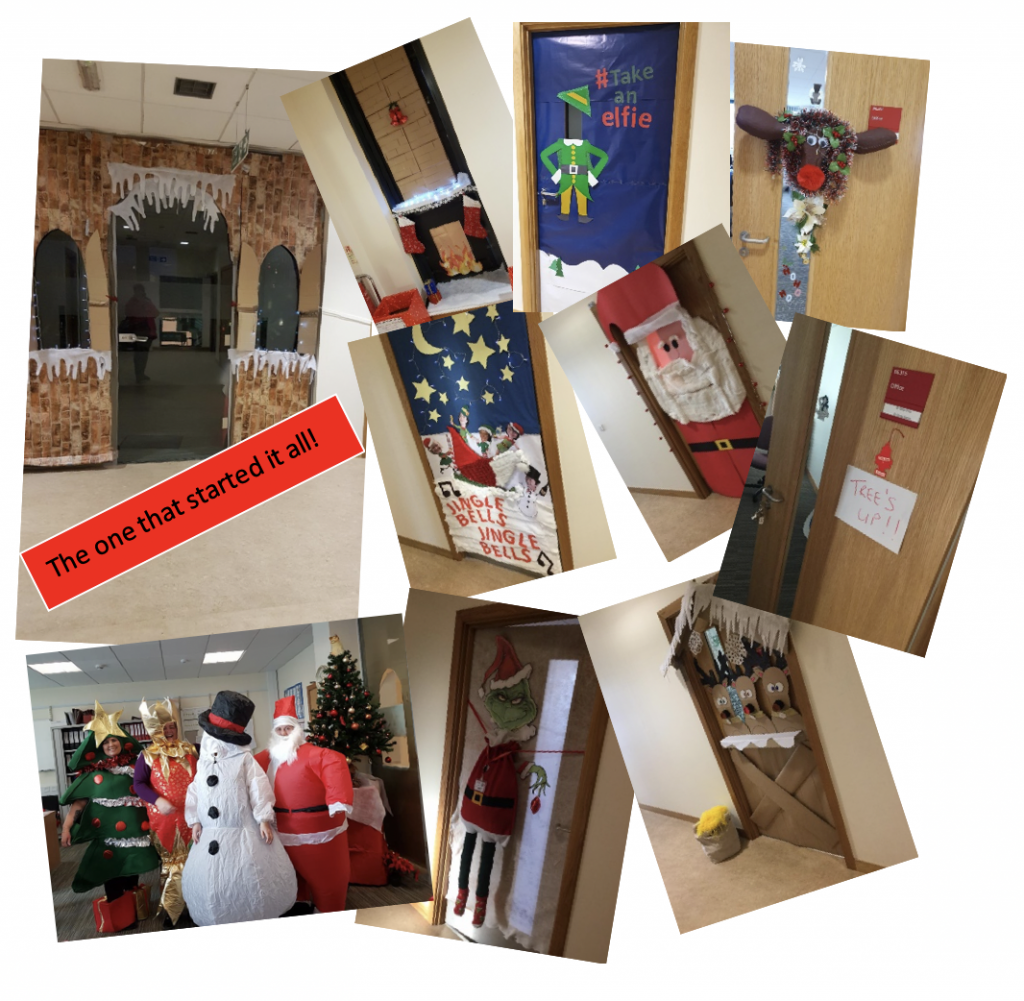Gather: Offering A Superficial Novelty or Genuine Pedagogy Promise?
By Matt Birch and Helen Kerr
Background
The QUB School of Nursing and Midwifery Staff Development Committee chaired by Dr Helen Kerr organise a biennial Staff Development Day to support all categories of staff in maximising their working role potential and to encourage time out from one’s routine work environment. Although typically facilitated at Riddel Hall, QUB, the Covid-19 restrictions in 2021 compelled committee member Matt Birch to devise a solution that would allow the event and activities to occur remotely. Although lockdown had resulted in staff gaining varying degrees of exposure to traditional conferencing tools like MS Teams and Zoom, the Committee felt staff were so accustomed to this modality, that a new, engaging approach should be considered. It was for this reason that Matt developed a bespoke virtual conferencing environment using Gather.
What is Gather?
Although described as a web-conferencing platform, Gather is special, as it affords users the ability to build ‘physical’ 3D graphical spaces, where avatar representations of participants can interact with objects and other live participants, in much the same way as in popular quest games like World of Warcraft. This affordance for legitimate spatial exploration and meaningful interactivity was why the platform was favoured over conventional tools, as it allowed for the mimicry of “real-world” rules, such as having to approach people to start conversations and being intentionally responsible for moving oneself to certain locations to view or interact with certain things.

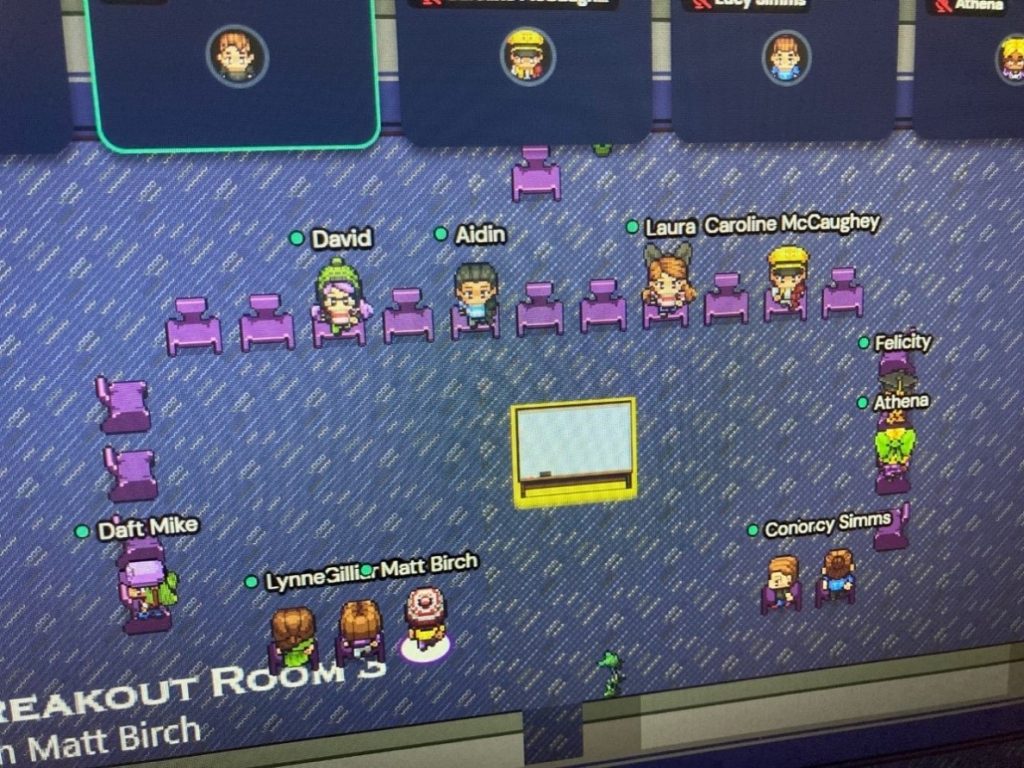
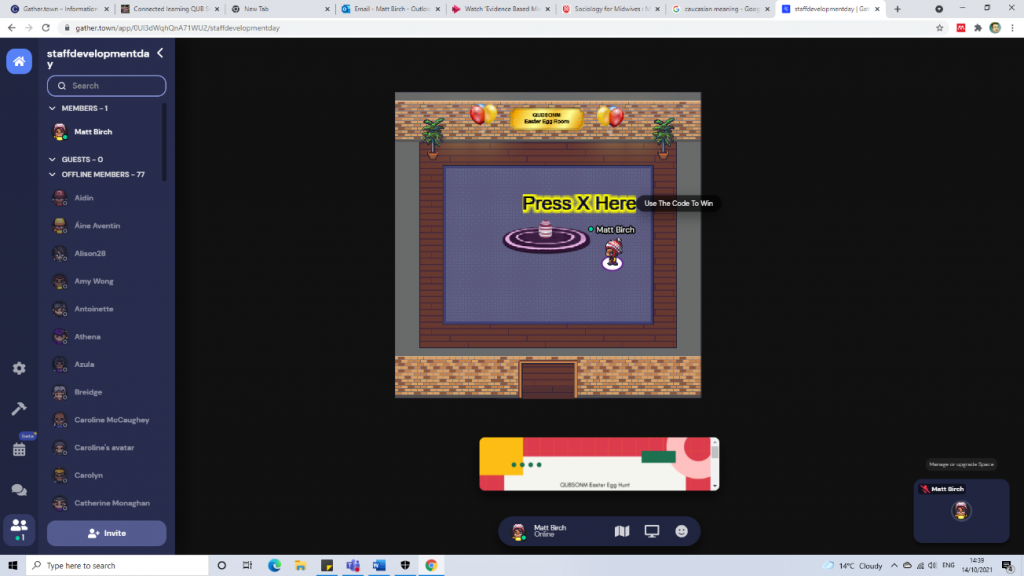
How Gather was used
Event content had been developed based on a survey, which asked staff to comment on what they wished to experience on the day. Although much of this preparation occurred prior to the event moving online, the inclusion of interactive whiteboards, podiums, and video projectors within the Gather environment added an immersive aspect to processing, thus helping those in attendance feel more like they were in an authentic classroom or conference setting. Efforts were even made to extend activities beyond the formal, through the inclusion of a yoga room, a treasure hunt, and a real working cinema. Most significantly, immersive activity was achieved while also retaining all the standard features of a traditional web- conferencing experience including instant messaging (IM), screen sharing, as well as webcam and microphone control. This meant that Gather afforded a healthy combination of familiarity and novelty, therefore, emphasising intuition, engagement, and challenge.

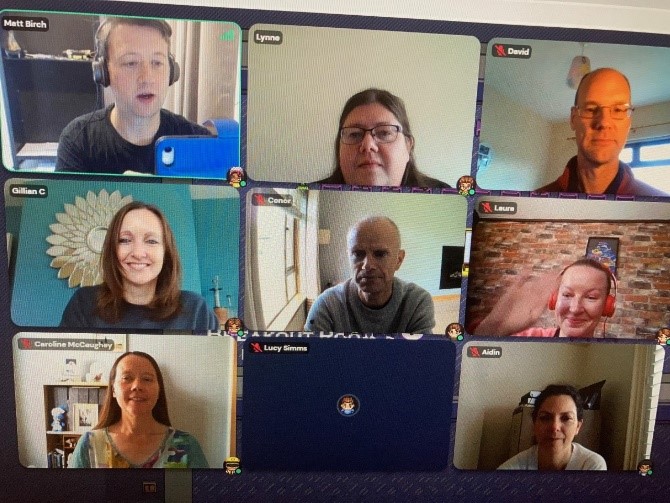
Over 70 staff attended, with the agenda including a Keynote presentation from Professor Dame Jocelyn Bell-Burnell and other presentations from staff at QUB on positive mental health, connected learning and embedding the ICARE values to one’s professional roles. The day was topped off with a quiz and a staff family photo of everyone’s self-created avatars
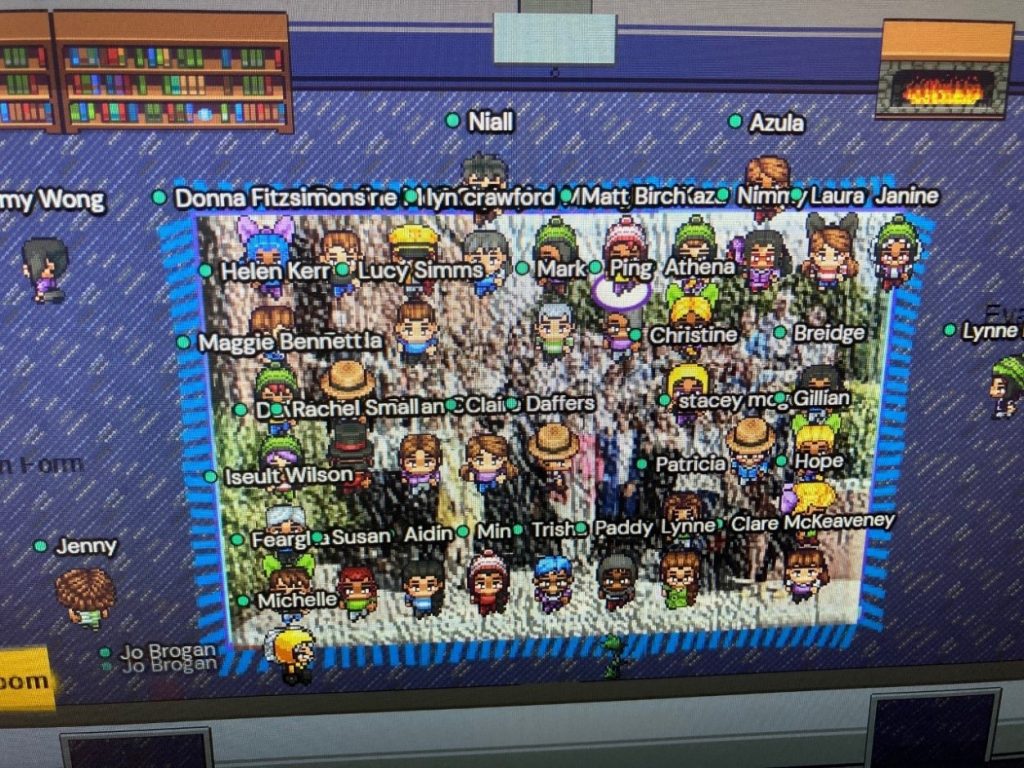
Staff reviews were unanimously positive with 39 completed evaluations, which demonstrated a score of 4.2 out of 5 in terms of how much staff enjoyed the platform, and 4.2 out of 5 for how much they enjoyed the event.


Some Considerations
Having run a critical eye over the platform, we did see some important considerations, rather than out and out limitations, although the absence of a platform native video recording tool should be remedied. Firstly, although Gather is free for activities for up to 25 people, a payment is necessary for larger groups. This payment is based on attendee numbers, which makes it reasonable for one-off events, however, this could become expensive if one wished to run an event over a series of days. There are technical considerations, as Gather seems to perform excellently well in Chrome but exhibits an array of glitches when accessed via other browsers, which is not great for students and educators who use tools like Microsoft Edge, Safari, and Firefox. There are socio-cultural considerations, in the sense that although staff were free to explore and chat with whomever they wished, some staff noted they felt anxious to speak, for fear of not knowing who might hear. This is understandable, given a year of becoming conditioned to always being attentive to whether one’s webcam or microphone is active within live calls. This leads to one final consideration, which is that although the avatar of a participant may be visible in a Gather environment, there is no guarantee the person controlling it is paying attention or is even still participating. This is reminiscent of students remaining logged into web-conferences, even after a lecture has concluded. This suggests spontaneous interaction may be the only way to verify attendance.
Implications For Teaching and Learning
Gather provides much potential. For instance, although Gather could be seen as one in an increasingly long line of platforms, its capacity to mimic the proximity related rules of the real-world within 3D-spaces provides genuine opportunities to exploit active learning that goes beyond the superficial. For example, scenario-based roleplaying could provide opportunities for authentic knowledge application activities.
Additionally, one’s ability to independently move around the Gather environment in ways not possible in conventional conferencing offers potential for heighten learner-centred activities. For instance, in a conventional web-conference, students typically wait to view or present a poster in some prescribed sequential order. In Gather, posters can be placed throughout a digital room, thereby granting students a heightened locus of control over which posters they wish to view and when. This may seem trivial but imagine how this heightened locus of control could be exploited in the creation of WebQuests.
In fact, Gather’s free integrated map builder tool, as well as the platforms library of pre-built environments, means that educators are only limited by their own imagination, as any environment design, can be mapped out and produced with a little time, effort, and creative flair. Finally, although somewhat limited in customisation options, the fluidity of the avatar creation tool may also offer benefits to learning activities where an instantaneous or continuous change of appearance is important.
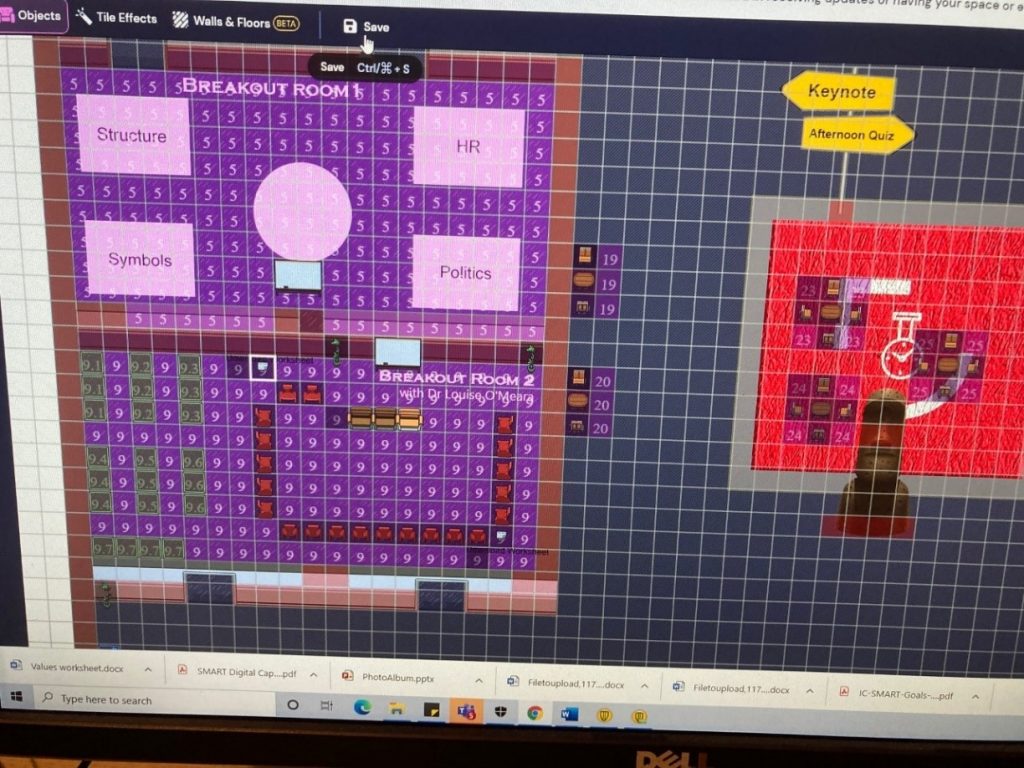
Conclusion
So, does Gather offer superficial novelty or genuine pedagogy promise? We think the latter, but you must decide for yourself. The key to successfully implementing platforms like Gather is letting the learning requirements, purpose and expected goals determine what product or process (if any) should be implemented. Gather may not be the solution to all your online learning needs but it certainly aligns well with plenty of pedagogic use cases.
.

